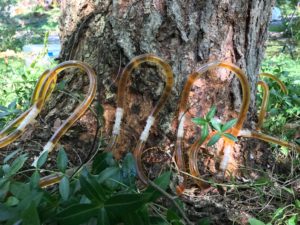What Is Chlorosis?
When a tree is showing chlorotic symptoms, this means the foliage is unable to produce chlorophyll effectively, leading to yellow leaves or pale green leaves. Chlorosis in trees can be a serious issue affecting plant growth and overall tree health.
Helping Property Owners Care for Valuable Trees
A tree is considered chlorotic when the leaves turn partially or completely yellow or pale green with darker green veins. This may occur on a single branch or a large portion of the canopy, depending on severity. Many factors contribute to chlorosis. In southern Wisconsin, a few of the most common causes in trees and shrubs are nutrient deficiencies related to:

- Soil alkalinity (high pH)
- Iron deficiency
- Manganese deficiency
- Compaction of the soil
- Drought and/or poor drainage
Maple, oak and birch trees are the three most commonly chlorotic trees in the greater Madison area.
Should I Worry About Chlorosis?
 Without chlorophyll, the tree’s ability to produce and store energy is reduced. This puts undue stress on the tree or shrub, especially if severe enough. It may not kill the tree or shrub, but without ample energy production, the tree is less able to resist diseases and drought stress. If you value your trees and want them to thrive, chlorotic signs are certainly a cause for action.
Without chlorophyll, the tree’s ability to produce and store energy is reduced. This puts undue stress on the tree or shrub, especially if severe enough. It may not kill the tree or shrub, but without ample energy production, the tree is less able to resist diseases and drought stress. If you value your trees and want them to thrive, chlorotic signs are certainly a cause for action.
Treatment And Management
There are a few treatment options depending on the cause of the chlorosis and the severity:
Soil Adjustments: Alter soil properties to allow proper nutrient uptake. This may involve physical or chemical remediation to the area around the tree, addressing issues like soil pH, organic matter, and drainage. A soil test is essential to determine the exact deficiencies and the appropriate amendments.
Nutrient Injection: Trunk infusion of appropriate supplemental nutrients. This is analogous to an I.V. human treatment in a hospital to immediately improve certain body chemistry problems. This is a short-term solution, which can provide near-immediate results. Iron sulfate is commonly used to treat iron chlorosis.
Soil Amendments: Add elements like biochar, nutrients, and biostimulants. These supplements contain elements which will make nutrients available to the tree and improve soil health.
Regular Soil Testing: Conducting regular soil tests to monitor and adjust soil pH levels and nutrient content. Soil sample results will guide the necessary adjustments to promote healthy green leaves.
During your tree consultation, our Certified Arborists will advise which approach is suitable on a case-by-case basis.
Not Sure Why Your Tree Leaves Are Yellowing?
Our arborists are on standby to provide professional insight to restore your tree’s health.
